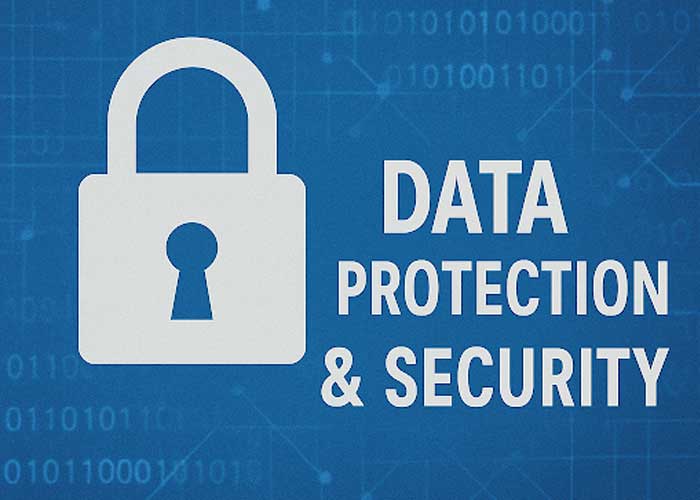The Cybersecurity Information Sharing Act, commonly known as CISA, was signed into law in December 2015 as part of the broader Cybersecurity Act of 2015. Its primary goal is to enhance the United States’ cybersecurity framework by encouraging the voluntary exchange of cyber threat information between federal agencies and private companies. This exchange is designed to bolster the nation’s cybersecurity defenses by facilitating a more coordinated response to cyber threats and vulnerabilities. By fostering communication and collaboration across different sectors, CISA aims to create a more resilient digital environment.
The act acknowledges the complex and interconnected nature of modern cybersecurity challenges. As cyber threats continue to evolve, they often target multiple sectors simultaneously, making it essential for both public and private entities to work together. CISA provides a legal framework that not only encourages this cooperation but also addresses some of the legal and operational barriers that previously hindered effective information sharing. Through this legislation, stakeholders are better equipped to anticipate and mitigate potential cyber threats, thereby safeguarding critical infrastructure and sensitive data.
Key Objectives of the CISA Act
The CISA Act is built around several core objectives that are designed to enhance the nation’s cybersecurity landscape:
- Enhance Cybersecurity Awareness: By promoting the sharing of cyber threat information, the act seeks to increase awareness of potential threats and vulnerabilities across various sectors. This heightened awareness allows entities to adopt proactive measures to protect their systems and data from potential breaches.
- Improve Response to Cyber Threats: The act facilitates the real-time exchange of threat information, enabling quicker and more effective responses to cyber incidents. This rapid sharing of information helps to mitigate the impact of cyber threats on critical infrastructure and sensitive data, thereby reducing potential damages.
- Promote Collaboration: Recognizing that cybersecurity is a shared responsibility, the act fosters collaboration between the government and the private sector. This partnership acknowledges the vital roles both parties play in protecting the nation’s digital assets and encourages joint efforts to enhance cybersecurity resilience.
How Does the Cybersecurity Information Sharing Act Work?
The CISA Act outlines specific mechanisms for sharing cybersecurity information between government agencies and private sector entities. These mechanisms are designed to facilitate the efficient exchange of information while addressing potential legal and operational challenges.
Voluntary Information Sharing
At the heart of the CISA Act is the concept of voluntary information sharing. The legislation encourages businesses to share information about cyber threats with the Department of Homeland Security (DHS). In return, the DHS disseminates this information to other federal agencies and participating private sector entities, creating a comprehensive threat intelligence network. This voluntary approach is crucial because it respects the autonomy of private businesses while still promoting a collaborative cybersecurity environment.
The voluntary nature of the program also helps to build trust between the government and private entities. By allowing companies to decide what information to share and when, the act reduces concerns about government overreach and encourages more entities to participate in the information-sharing process. This trust is vital for the success of the initiative, as it ensures that valuable threat information is shared promptly and effectively.
Protection for Sharing Entities
To encourage participation, the CISA Act provides several legal protections to entities that share cyber threat information. These protections are critical in addressing concerns that may deter companies from participating in the information-sharing process.
- Liability Protection: One of the key protections offered by the act is liability protection. Companies that share information in accordance with the act are shielded from legal liability related to the sharing of that information. This protection is designed to alleviate fears of potential legal repercussions and encourage more businesses to engage in the information-sharing program.
- Confidentiality Safeguards: The act also includes measures to ensure that shared information is treated as confidential and is not used for regulatory purposes. These safeguards are intended to protect the proprietary and sensitive information of participating entities, further incentivizing their involvement in the program.
Information Sharing and Analysis Organizations (ISAOs)
In addition to direct sharing with the DHS, the CISA Act supports the creation of Information Sharing and Analysis Organizations (ISAOs). These entities serve as hubs for collecting and disseminating cyber threat information, playing a crucial role in fostering collaboration and communication between different sectors. ISAOs help to streamline the information-sharing process by acting as intermediaries that facilitate the flow of threat intelligence between various stakeholders.
ISAOs also contribute to the development of sector-specific cybersecurity strategies by providing tailored threat intelligence and analysis. By focusing on the unique challenges faced by different industries, these organizations help to enhance the overall effectiveness of the information-sharing program and improve the nation’s cybersecurity posture.
Benefits of the Cybersecurity Information Sharing Act
The CISA Act offers numerous benefits for both the public and private sectors, contributing to a more secure and resilient digital environment.
Enhanced Threat Detection and Prevention
By sharing threat information, organizations can better detect and prevent cyber attacks. Access to a broader range of threat data allows for more comprehensive threat analysis and improved security measures. This enhanced threat intelligence enables organizations to identify emerging threats and vulnerabilities more quickly, allowing them to implement preventive measures before an attack occurs.
The collaborative nature of the information-sharing program also helps to improve the overall quality of threat intelligence. By pooling resources and expertise, participating entities can develop more accurate and actionable insights into the threat landscape, leading to more effective cybersecurity strategies.
Faster Response Times
Real-time sharing of cyber threat information enables quicker response and mitigation efforts. Organizations can swiftly implement countermeasures to protect their systems and data, reducing the potential impact of cyber incidents. This rapid response capability is particularly important in the context of advanced persistent threats, which often require immediate action to prevent significant damage.
The ability to respond quickly to cyber threats also helps to minimize the disruption caused by cyber incidents. By rapidly addressing vulnerabilities and mitigating attacks, organizations can maintain the continuity of their operations and reduce the potential financial and reputational costs associated with cyber breaches.
Improved National Security
The act contributes to national security by strengthening the overall cybersecurity posture of critical infrastructure sectors, including energy, finance, and healthcare. By enhancing the security of these vital sectors, the CISA Act helps to safeguard the nation’s economic stability and public safety.
In addition to protecting critical infrastructure, the act also supports the broader national security agenda by fostering international collaboration on cybersecurity issues. By sharing threat intelligence with international partners, the United States can contribute to global efforts to combat cybercrime and enhance the security of the global digital ecosystem.
Concerns and Criticisms of the CISA Act
Despite its benefits, the CISA Act has faced criticism from privacy advocates and civil liberties organizations. These concerns highlight the need for a balanced approach to information sharing that respects individual rights and freedoms.
Privacy Implications
Critics argue that the act’s information-sharing provisions could lead to government surveillance and privacy violations. While the act includes measures to protect personal information, there are concerns about the potential misuse of shared data. Privacy advocates worry that the broad scope of information sharing could result in the collection of personal data that is not directly related to cybersecurity threats, leading to unwarranted intrusions into individuals’ privacy.
To address these concerns, it is essential to implement robust oversight mechanisms and ensure that information-sharing practices are transparent and accountable. By establishing clear guidelines and safeguards for the handling of personal data, stakeholders can build trust in the information-sharing process and protect individual privacy rights.
Limited Oversight
Some opponents of the act believe that there is insufficient oversight and accountability in the information-sharing process. They worry that the lack of transparency could lead to abuses of power and the misuse of shared information. This concern is particularly relevant in the context of government agencies, where the potential for overreach and misuse of data is a significant risk.
To mitigate these concerns, it is crucial to establish independent oversight bodies that can monitor the implementation of the CISA Act and ensure that information-sharing practices align with legal and ethical standards. These bodies should have the authority to investigate potential abuses and hold stakeholders accountable for any violations of the act’s provisions.
Effectiveness
There are questions about the effectiveness of the CISA Act in truly improving cybersecurity. Critics point out that information sharing alone may not be enough to address the complex and evolving nature of cyber threats. While the act provides a valuable framework for collaboration, it must be complemented by other cybersecurity measures, such as robust security protocols, employee training, and investment in advanced technologies.
To enhance the effectiveness of the CISA Act, stakeholders should focus on integrating information sharing with broader cybersecurity strategies. By adopting a holistic approach to cybersecurity, organizations can leverage the benefits of information sharing while also addressing the full spectrum of cyber risks and challenges.
Impact on Businesses and Individuals
by Sasun Bughdaryan (https://unsplash.com/@sasun1990)
The CISA Act has significant implications for businesses and individuals, affecting how they approach cybersecurity and manage digital risks.
For Businesses
- Incentives for Participation: The legal protections offered by the act incentivize businesses to participate in information sharing, enhancing their cybersecurity efforts. By reducing the legal risks associated with sharing threat information, the act encourages more companies to engage in collaborative cybersecurity initiatives.
- Opportunities for Collaboration: Businesses can collaborate with federal agencies and other entities to improve their cybersecurity strategies and defenses. This collaboration allows companies to access a wider range of threat intelligence and expertise, helping them to develop more effective security measures and respond more quickly to emerging threats.
For Individuals
- Improved Security: As businesses and government agencies strengthen their cybersecurity measures, individuals benefit from enhanced protection of their personal information and digital assets. By improving the overall security of digital systems, the CISA Act helps to reduce the risk of data breaches and identity theft, protecting individuals from the financial and emotional consequences of cybercrime.
- Increased Awareness: The act also contributes to greater awareness of cybersecurity issues among individuals, encouraging them to adopt safer online practices and take proactive steps to protect their digital lives. By promoting a culture of cybersecurity awareness, the CISA Act helps to empower individuals to play an active role in safeguarding their personal information and digital assets.
Conclusion
The Cybersecurity Information Sharing Act represents a significant step forward in the fight against cyber threats. By promoting collaboration and information sharing between the government and private sector, the act aims to enhance the nation’s cybersecurity posture. However, it is essential to balance the benefits of information sharing with the need to protect privacy and civil liberties. As cyber threats continue to evolve, ongoing dialogue and collaboration will be crucial to ensuring the effectiveness and fairness of the CISA Act. As we navigate the complexities of the digital age, a concerted effort from all stakeholders will be necessary to protect our digital future and maintain the trust and security of our interconnected world.



